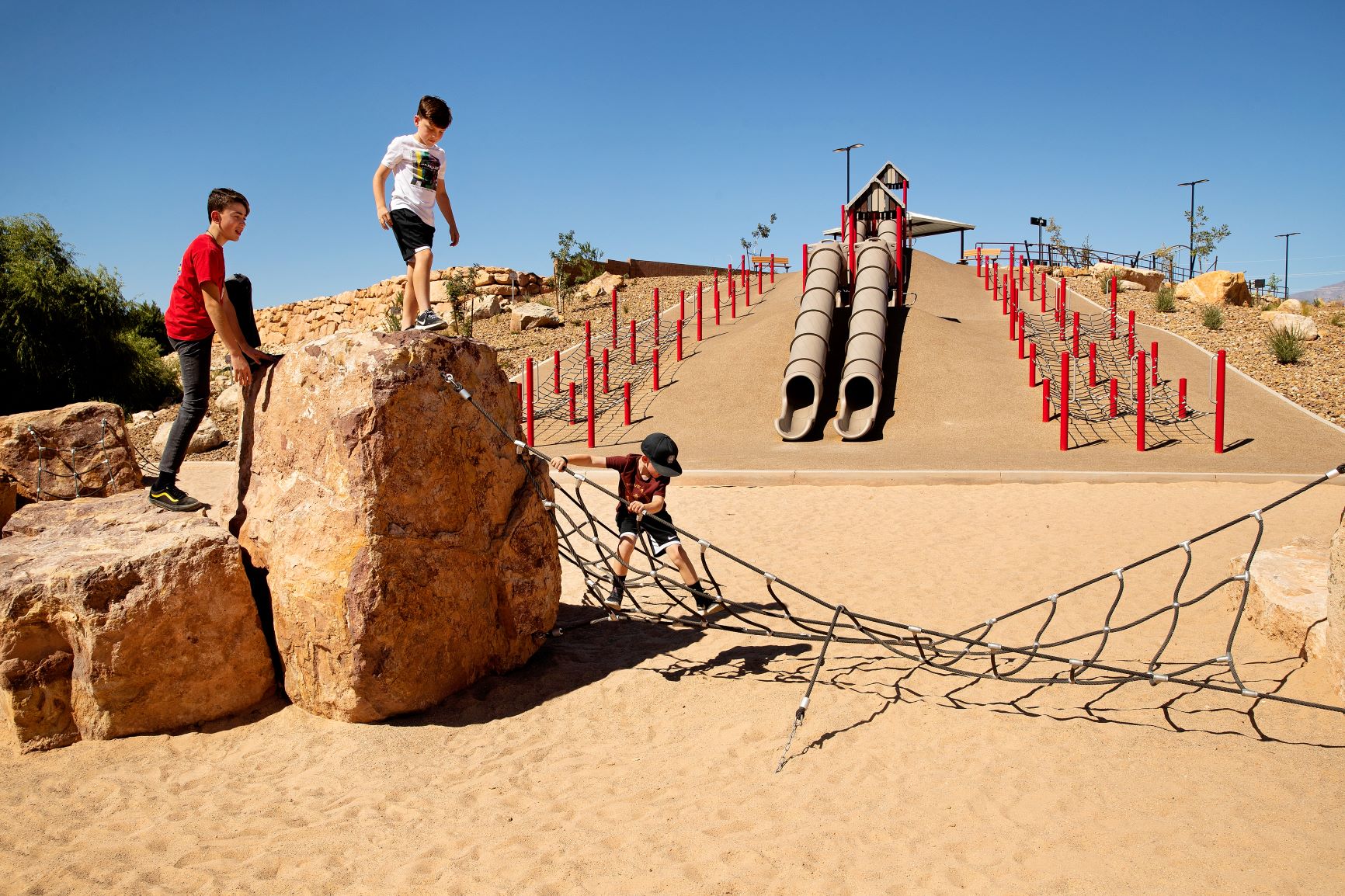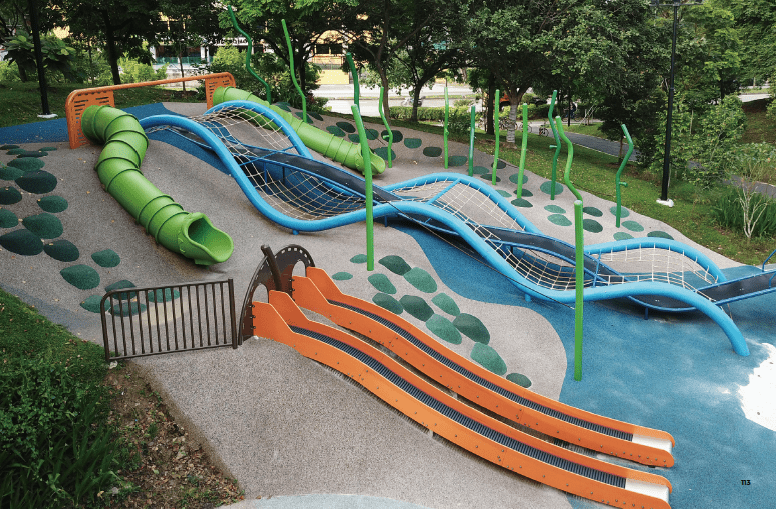Keeping children safe on the playground is a priority for all parents and guardians. But too many restrictions at the park can hinder a child’s development. Kids need to be able to run, play and interact with others while challenging themselves, testing the limits and exploring their boundaries.
Of course, parents need to know that playgrounds are “safe,” otherwise they won’t bring their children there to play. So how can you promote safe risk taking in your park playground design. Below we will share a few ideas we recommend to our clients, as well as information on why risky play is important.

Benefits of Risky Play for Kids
When children involve themselves in risky play, they have the opportunity to assess risks and manage unfamiliar situations. Consider a child who is learning to ride their bike. There is some risk in riding a bike. A child can fall and get a concussion, break a bone or ride out in front of traffic. But parents still teach their children how to ride because it’s an important skill.
Activities like climbing, sliding, balancing and jumping from heights are often considered risky but they are necessary for childhood development. By engaging in risky play, kids can extend their limits, learn new skills, build confidence, accept new challenges and learn to problem solve. And, when they try and fail, they learn new ways to do things. Children who engage in some risky play are less clumsy, more confident in their bodies and have better balance.

Making Risky Play Accessible to All Children
Community parks and playgrounds provide an environment where kids can explore and take risks without harming themselves or others. Here are some ways that you can push the boundaries of safety when designing a play and recreation space:
- Add non-traditional play equipment to your design. By using non-typical materials and concepts, which we will refer to as Playful Landscapes, you can create play spaces that are unique and different by design. These types of play spaces often push the boundaries of safety and are not your standard post and platform playgrounds. Play spaces with slopes provide opportunities for safe risk taking and challenges while encouraging free play. Adding nets, ropes and hand holds encourage climbing the slopes, open slopes are great for rolling down or crawling up. Slopes add interest and dimension to play spaces. Bouncers push the boundaries of traditional play while offering multigenerational play opportunities and encouraging physical development.
- Add natural elements as part of the play environment. Use natural boulders, fallen logs, trees and planter boxes mixed in with the manufactured play equipment. This not only adds interest to your design, but it adds a nature component providing additional balancing and climbing activities. Using rocks and boulders or creating mounds within the play area using poured-in-place rubber safety surfacing, combined with handholds, nets and ropes for climbing provide unique user experiences with multiple challenges and opportunities to assess risk. If your park or play area has a creek or stream close by, that too is a great play experience for children. It can also be educational as well. Urban areas don’t often allow children to experience nature so adding it to their play environment only makes good sense and broadens their experiences.
- Use the existing site topography to add interest to your design. For years, playground designers and landscape architects have faced a major obstacle when creating outdoor play environments: the existing topography of the designated site. Until recently, it was challenging to place playgrounds in areas with unusual topographies. Thanks to innovations like nets and rope-based play structures and custom-designed playgrounds, designers are no longer shying away from challenging landscapes and themes. They’re embracing them and using them to add challenge and pushing the boundaries with new innovative concepts. In addition to rope-based play terracing playgrounds and using hillsides for slides are perfect.
- Add higher slides and rope-based play components to your design. Because there have been so many advancements in playground safety surfacing, you can now provide higher slides because you are able to achieve the proper fall attenuation. Enclosed towers allow children to climb higher and experience the rush of a higher slide. Nets and rope-based custom playground designs allow you to create one-of-a-kind play experiences that again push safety boundaries and provide opportunities for risky play. These type of nets and ropes allow for different play experiences each time a child returns. No two times do they have to play the same way.
Accidents can always happen, but this doesn’t mean you should try to eliminate all risks. Kids need to learn from their actions and how to keep themselves safe. They also need to explore their limits and develop new, creative ways to do things. To discuss ways to add unique and different play elements to your park or playground design, contact CR Studio Design today. Often, parks with non-traditional play environments tend to be the most popular because they are different and provide unique experiences.
